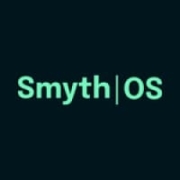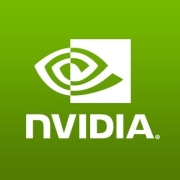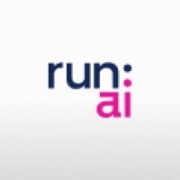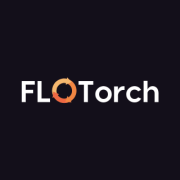AI Orchestration Frameworks streamline AI integration by coordinating tasks, automating workflows, and managing infrastructure to improve efficiency and scalability for businesses leveraging AI technologies.
The top 5 AI Orchestration Framework solutions are Langchain, SmythOS, SuperAGI, NVIDIA AI Enterprise and Run:AI, as ranked by PeerSpot users in September 2025. Langchain received the highest rating of 0.0 among the leaders and holds the largest mind share of 32.6%. Run:AI is the most popular solution in terms of searches by peers.
Providing a cohesive environment to deploy, monitor, and scale AI models, these frameworks simplify complex processes. They offer a unified interface for managing datasets, models, and compute resources and ensure seamless collaboration among data scientists, developers, and operations teams. Solutions in this category enhance resource allocation, minimize downtime, and optimize workloads for better performance.
What are the critical features of AI Orchestration Frameworks?In industries like healthcare, finance, and retail, AI Orchestration Frameworks ensure smooth integration of AI into existing systems. They help manage data pipelines, automate real-time decision-making, and maintain system reliability, thus enabling better service delivery and operational excellence.
AI Orchestration Frameworks enable businesses to effectively manage and deploy AI applications, reducing complexity in AI operations. They support a wide range of applications across different sectors, making AI more accessible and manageable for organizations.
| Product | Market Share (%) |
|---|---|
| Langchain | 32.6% |
| SmythOS | 23.5% |
| NVIDIA AI Enterprise | 12.9% |
| Other | 31.0% |







AI Orchestration Frameworks streamline and automate the complex integration of diverse AI tools and platforms within your business infrastructure. By coordinating these tools, you can achieve improved efficiency, reduce manual intervention, and accelerate decision-making processes. This leads to cost savings and optimized resource allocation, allowing your company to focus on innovation while maintaining operational agility.
What features should you look for in an AI Orchestration Framework?When selecting an AI Orchestration Framework, prioritize scalability, flexibility, and ease of integration. Look for robust APIs, support for various machine learning models, and compatibility with multiple data sources. Enhanced security features are crucial for protecting sensitive information. A user-friendly interface and comprehensive documentation will facilitate rapid deployment and reduce the learning curve for your team.
How do AI Orchestration Frameworks handle data management challenges?AI Orchestration Frameworks effectively manage data by ensuring seamless data flow between systems, automating data preprocessing, and facilitating real-time analytics. These frameworks employ advanced machine learning algorithms to clean, transform, and analyze data. This improves data accuracy and reliability, enabling predictive insights and informed decision-making. Integration with data governance tools ensures compliance with industry standards.
Can AI Orchestration Frameworks improve customer experience?Yes, AI Orchestration Frameworks play a significant role in enhancing customer experiences by allowing businesses to provide personalized services and support. By leveraging real-time data analytics and machine learning models, these frameworks help identify customer preferences and predict future needs, enabling better-targeted marketing and improved customer interaction. This results in increased customer satisfaction and loyalty.
What are the common challenges when implementing AI Orchestration Frameworks?You may face challenges such as integrating with legacy systems, navigating the complexities of data silos, and handling diverse AI and data tools. Ensuring data security and compliance with regulations can pose significant hurdles. Training your team to adapt to new technologies and processes while managing change is essential for successful implementation. Choosing an adaptable and robust framework minimizes these challenges.